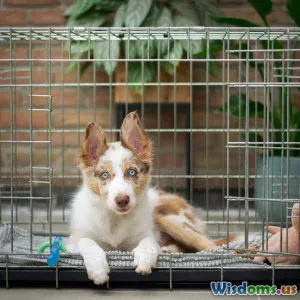
Dogs as Companions for Kids
7 min read Discover how dogs enrich children's lives as loyal companions, fostering growth, empathy, and joy. (0 Reviews)
Dogs as Companions for Kids: Building Bonds That Last a Lifetime
Imagine a small child taking their first unsteady steps across the living room, eager little hands reaching out to a wagging tail. Dogs have been cherished companions to humans for thousands of years, and their role as friends to children is especially meaningful. Beyond simply being pets, dogs can become trusted allies in a child's development, offering emotional security, teaching responsibility, and providing companionship that many children cherish deeply.
The Emotional and Developmental Benefits of Dogs for Children
When children grow up with dogs, they often experience heightened emotional intelligence. Interactions with dogs have been shown to increase levels of oxytocin—the “bonding hormone” — in both humans and pets, creating feelings of love and security. According to a 2017 study published in the journal Frontiers in Psychology, children exposed to family dogs demonstrated enhanced social understanding and empathy compared to their peers without pets.
Dogs can also provide emotional support during difficult times, reducing anxiety and feelings of loneliness. For instance, therapy dogs are increasingly employed in pediatric hospitals and schools to comfort children facing trauma or chronic illnesses. The presence of a calm, affectionate dog can be transformative, suggesting a depth of connection that goes beyond words.
Teaching Responsibility Through Pet Care
Beyond emotional benefits, having a dog is an excellent way for children to learn responsibility. Daily routines such as feeding, grooming, walking, and cleaning up after a dog help instill discipline and a caring attitude from an early age. Parents who engage kids in these activities often report improved self-esteem and a sense of accomplishment in their children.
For example, a family with two young children might assign each child responsibilities on different days to care for their Labrador Retriever. Over time, this not only teaches the practical aspects of dog care but also encourages collaboration and accountability.
Enhancing Social Skills and Physical Activity
Dogs act as social catalysts that bridge interactions between children and their peers. Walking a dog or playing fetch in the park invites conversations and friendships that might otherwise not occur. Research by the Human-Animal Bond Research Institute (HABRI) highlights that children with pets tend to have better social networks and reduced feelings of social isolation.
Furthermore, dogs encourage physical activity. In an era where childhood obesity is a growing concern—with the CDC reporting over 19% of children ages 2-19 in the U.S. classified as obese in 2021—corporating a dog’s needs for walkies and playtime can significantly boost a child's daily exercise.
Choosing the Right Dog for Children: What to Consider
Not all dogs are equally suited as companions for kids. It is crucial to select a breed or individual dog with temperament and energy levels that match the family’s lifestyle and children’s ages.
- Breed Considerations: Breeds like Golden Retrievers and Beagles are known for their friendly, patient demeanor and are often recommended for families with young children.
- Size and Energy: Larger dogs with extreme energy levels may overwhelm smaller children, while smaller dogs might be too fragile or wary.
- Training and Socialization: Regardless of breed, dogs should receive proper training and socialization to ensure safe interactions. This includes learning commands, bite inhibition, and how to tolerate noise and activity common in a household with children.
Creating a Safe and Enriching Environment
Safety is paramount when children and dogs share a home. Education about respectful interaction is critical. Teaching kids not to approach a dog while it’s eating or sleeping, not to pull ears or tails, and to interpret canine body language can prevent many accidents.
Supervision, especially for younger children, is advised until the dog and child develop a comfortable bond and clear boundaries. Stories abound of children being bitten due to rough play or misunderstandings, but with awareness and patience, these risks are minimized.
Real-Life Stories: How Dogs Have Changed Kids’ Lives
Consider the case of Mason, a nine-year-old boy with autism who struggled with communication. His family introduced a trained assistance dog named Max, and within months, Mason’s parents noted significant improvements in his ability to engage with others, manage anxiety, and express emotions.
Or Anna, a shy 7-year-old who, after adopting a small rescue terrier, blossomed socially, joining school clubs and making friends more confidently.
These testimonials reflect the transformative power of canine companionship in diverse situations, showcasing dogs’ unique ability to nurture children's growth.
Conclusion: A Partnership That Enriches Lives
Dogs are far more than house pets—they are companions capable of shaping childhood experiences in remarkable ways. From fostering empathy and responsibility to enhancing social and physical well-being, the presence of a dog in a child’s life complements their development profoundly. Thoughtful selection and responsible care create an environment where both child and dog thrive in a mutually fulfilling bond.
For parents considering welcoming a furry friend, understanding the commitment and benefits is key. The journey, while requiring effort and patience, rewards families with memories and bonds that last a lifetime. The wag of a tail can indeed open hearts and minds, making dogs treasured partners in a child's formative years and beyond.
Rate the Post
User Reviews
Popular Posts





















